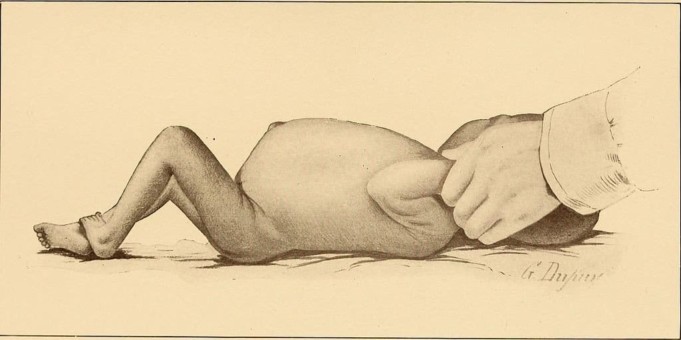The Nigeria Civil War occurred between the 6th of July 1967 to the 15th of January 1970. It was a war fought between the Federal Republic of Nigeria and the state of Biafra.
Despite the Biafran Airlift – an international humanitarian relief effort that transported food and medicine to the people of Biafra – about two million people were estimated to have died of starvation.
Children with large heads, pot bellies, and skinny arms were depicted on the front pages of newspapers such as TIME Magazine in a condition known as kwashiorkor.
Kwashiorkor is a form of nutrition disorder caused by a lack of protein and characterized by edema (water retention). It occurs commonly in areas that experience periods of famine such as the sub-Saharan region of Africa, Central America, and Southeast Asia.
Kwashiorkor is a condition mostly found in children below five years. Cases of kwashiorkor in first world countries are extremely rare. People who experience kwashiorkor have an emancipated look in their body parts except for their ankles, knees, and belly.
People who are affected by kwashiorkor usually recover fully if they are treated early. Treatment involves the introduction of protein and extra calories into the diet.
However, serious complications such as shock, coma, and permanent mental and physical disabilities could arise if treatment is delayed. Children with kwashiorkor may not develop properly and may remain stunted for the rest of their lives.
Causes of Kwashiorkor
Kwashiorkor is a protein deficiency and characterized by edema. Edema is caused by the osmotic imbalance of the gastro-intestinal system, causing swelling of the gut and the retention of water.
Kwashiorkor is marked by low levels of glutathione, an antioxidant responsible for preventing damage to cellular components caused by reactive oxygen species. High levels of oxidants are commonly observed during starvation and in cases of chronic inflammation.
The low intake of protein leads to signs such as edema in the hands and feet, anorexia, irritability, rashes, large fatty liver, and discolouration of hair. The typical swollen belly observed in kwashiorkor cases is caused by large fatty liver and ascites.
Ascites is defined as the abnormal buildup of fluid in the abdomen. In kwashiorkor cases, ascites is caused by low levels of albumin – a protein responsible for regulating oncotic pressure – in the blood.
Signs and Symptoms of Kwashiorkor
- Discoloration of hair
- Loss of appetite
- Irritability and lethargy
- Marked atrophy of muscles
- Retarded growth
- Dermatitis
- Skin lesions
- Enlarges belly due to fluid retention
- Cracked nails
- Dehydration
Diagnosis of Kwashiorkor
Diagnosis of kwashiorkor is performed by a medical professional through physical testing of the patient and reviewing the medical history of the child.
The World Health Organisation has a classification system that is used to measure the severity of malnutrition, and it is used to identify cases of kwashiorkor. The system involves three clinical measures which are:
- The mid-upper arm circumference
- Weight-for-height and length
- Presence of symmetrical pitting edema.
Mid-upper arm circumference that is less than 110m is associated with mortality in children less than six months old.
Also, blood tests for creatinine, total protein, prealbumin, and electrolyte levels would be performed. Samples from skin and hair would also be taken.
Treatment of Kwashiorkor
Although kwashiorkor is caused by malnutrition, merely feeding the patient is not enough to correct the deficiencies and effects associated with the condition.
If the patient has gone with eating proteins for a long time, feeding them may lead to a shock in the system. Many patients of kwashiorkor may develop an intolerance to lactose; hence, milk and other dairy products should be avoided until the body is appropriately able to synthesize lactose.
Early detection of kwashiorkor can be treated with a typically consisting of peanut butter, vegetable oil, sugar, and other vitamins and minerals. More severe cases of Kwashiorkor involving complications should be directed to the hospital. Hospital treatment involves:
- Treatment and prevention of low blood sugar
- Treatment of dehydration
- Treatment and prevention of hypothermia
- Treatment and prevention of infection with the use of antibiotics
- Treatment of vitamin and mineral deficiencies
- Correction of electrolyte imbalance
- Provision of emotional support
Kwashiorkor Complications
The following complications may arise due to kwashiorkor:
- Urinary tract infections
- Hypothermia
- Metabolic disturbances
- Electrolyte imbalance
- Decreased levels of insulin
- Loss of immune system
- Impaired cellular functions
- Shock
- Death












